Rare Scottish Silver Mounted Powder Horn Decorated with Carved Roundels of a Griffin and Eagles above Stylised Acanthus Leaves
A Rare Scottish Silver Mounted Powder Horn Decorated with Carved Roundels of a Griffin and Eagles above Stylised Acanthus Leaves
Initials to the silver band to top edge ‘I * AN…..WS’ and to lower band “I A’
Late 16th – Early 17th Century
Size: 38.5cm wide, 8.5cm dia. (max) - 15¼ ins wide, 3¼ ins dia. (max) / 45.5cm - 18 ins circumference (max)
Initials to the silver band to top edge ‘I * AN…..WS’ and to lower band “I A’
Late 16th – Early 17th Century
Size: 38.5cm wide, 8.5cm dia. (max) - 15¼ ins wide, 3¼ ins dia. (max) / 45.5cm - 18 ins circumference (max)
A Rare Scottish Silver Mounted Powder Horn Decorated with Carved Roundels of a Griffin and Eagles above Stylised Acanthus Leaves
Initials to the silver band to top edge ‘I * AN…..WS’ and to lower band “I A’
Late 16th – Early 17th Century
Size: 38.5cm wide, 8.5cm dia. (max) - 15¼ ins wide, 3¼ ins dia. (max) / 45.5cm - 18 ins circumference (max)
Initials to the silver band to top edge ‘I * AN…..WS’ and to lower band “I A’
Late 16th – Early 17th Century
Size: 38.5cm wide, 8.5cm dia. (max) - 15¼ ins wide, 3¼ ins dia. (max) / 45.5cm - 18 ins circumference (max)
Powder horns were used to carry gunpowder for use in flint lock firearms. The flasks were frequently made from cow horn which was naturally waterproof and conveniently hollow inside. Their container shape also made them excellent for keeping the powder dry. The earlier ones are larger than the later as the old charge powder was much less powerful.
The horn was softened in boiling water before being carved with the images of a griffin and eagles amidst acanthus. The griffin was a monster with the head and wings of an eagle and the body and legs of a lion. The griffin was used as a symbol for Christ, the two elements of the mythical beast being like the human, the lion on earth, and the divine, the eagle in the sky; the dual aspects of Christ’s nature. The lion and the eagle were respectively kings of the animals and of the birds. It combined a lion's strength with an eagle’s vigilance. The eagle also became to be symbolic of the resurrection. This powder horn would have been proudly carried and displayed across the body by means of a long strap and used wherever muzzle loading guns were fired.
The horn was softened in boiling water before being carved with the images of a griffin and eagles amidst acanthus. The griffin was a monster with the head and wings of an eagle and the body and legs of a lion. The griffin was used as a symbol for Christ, the two elements of the mythical beast being like the human, the lion on earth, and the divine, the eagle in the sky; the dual aspects of Christ’s nature. The lion and the eagle were respectively kings of the animals and of the birds. It combined a lion's strength with an eagle’s vigilance. The eagle also became to be symbolic of the resurrection. This powder horn would have been proudly carried and displayed across the body by means of a long strap and used wherever muzzle loading guns were fired.
Ex Private English collection
cf: A Scottish Highland powder horn illustrated in ‘The Proceedings of the Society of Antiquaries of Scotland Vol. VIII 1871’ Fig. 3 has a very similar acanthus leaf decoration carved to one side
cf: A Scottish Highland powder horn illustrated in ‘The Proceedings of the Society of Antiquaries of Scotland Vol. VIII 1871’ Fig. 3 has a very similar acanthus leaf decoration carved to one side
Rare Scottish Silver Mounted Powder Horn Decorated with Carved Roundels of a Griffin and Eagles above Stylised Acanthus Leaves
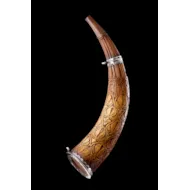
SOLD
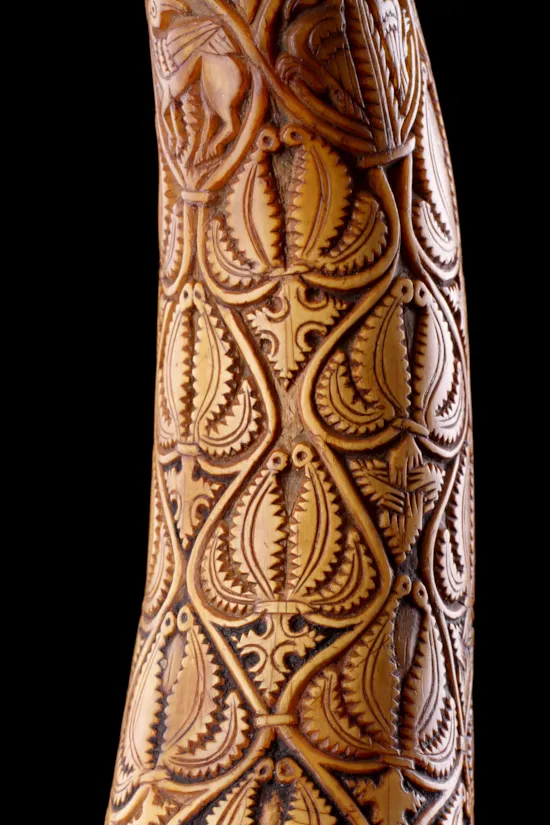
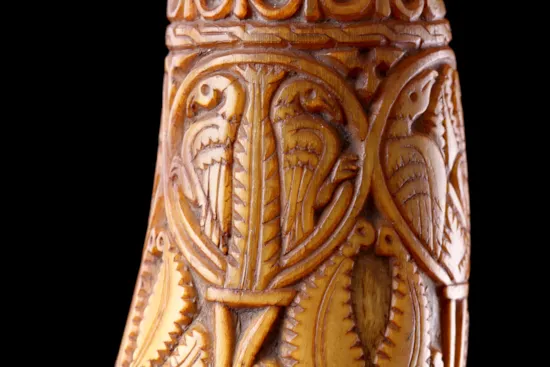
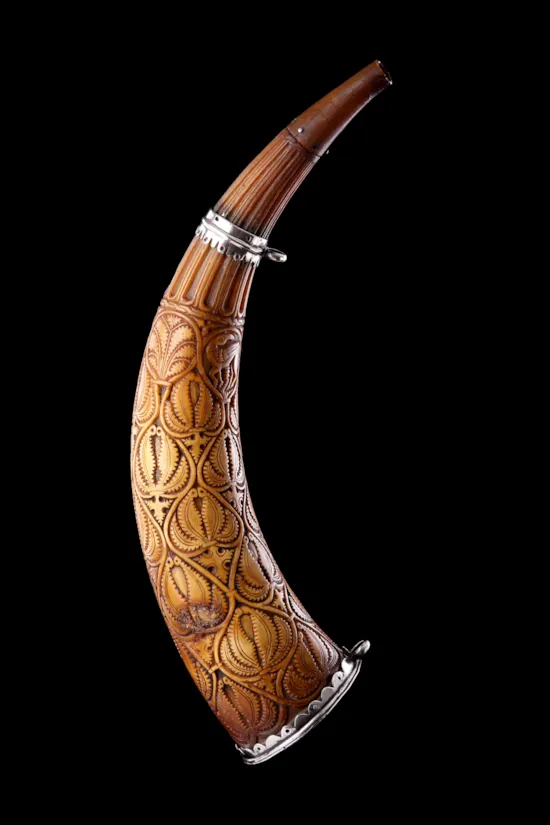
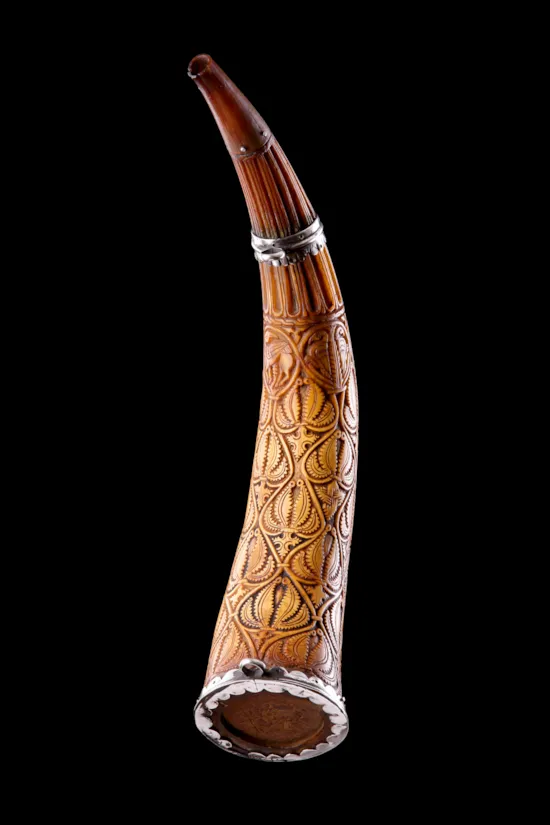




YOU MAY ALSO LIKE


